
This is a list of potential benefits and limitations: it was collected during workshops with service users (SU), professionals, and social work teachers in the autumn of 2022 .
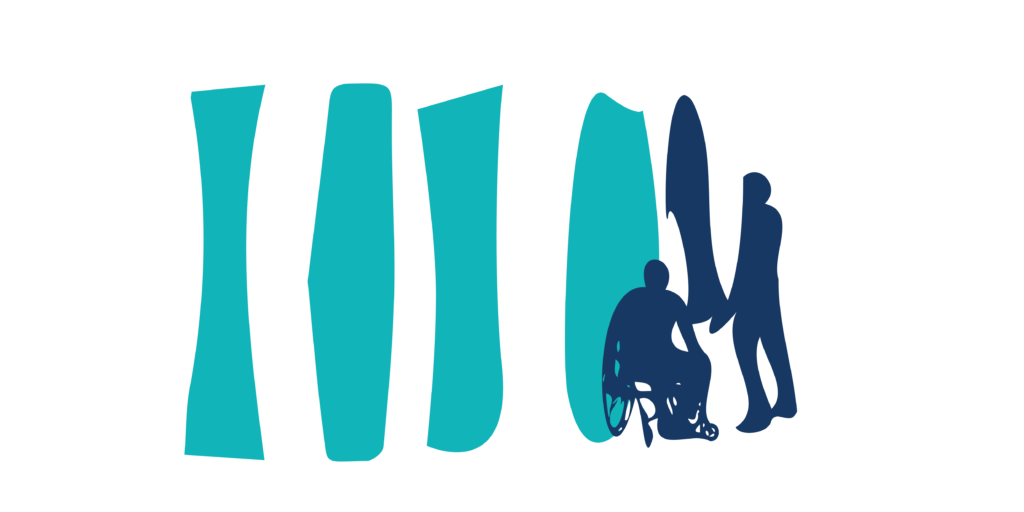
At the start : 4 key questions to develop educational activities involving service users
To improve the training of students
To promote the co-production of knowledge
To increase the quality of the social work education
To strengthen – empower the lecturers: skills, knowledge.
To become a better social worker
To better prepare future social workers for more effective and anti-oppressive practice
To increase the reputation of the institution
Service users and carers
Students
Lecturers
Educational institutions
Social workers
Researchers
Managers and Policy makers
Course development en curriculum design
Contribution as testimonies
Co-teaching in lessons, workshops, seminars
Assessing and providing feedback on papers and projects
Involvement in supervision of internship
Developing in projects and community interventions
In the classroom
In the community
In the social work institution
Digital environment
In public and private spaces

Literature shows that there are different kinds of participation. Participation ladders were developed to facilitate the identification of different levels of participation.
The ladders introduced by Shier, Hart, Arnstein were developed within healthcare and social welfare practice. They are hierarchically constructed. Each ascending rung represents an increasing level of participation. The ladder by Towle describes a range of roles that service users can play in education. This ladder is explicated as unhierarchical and should be understood as that each level of participation serves a different purpose. Towles ladders include a range of participation types.
In recent decades, increased attention and interest was given to service user participation in both social work practice and education. As Towel clarifies, service users’ participation can be acknowledged in many ways, depending on the educational purpose. When fostering service users’ participation in social work education, it might be unrealistic to think that all service user involvement can apply the highest level of participation. Therefore we suggest different types of service user participation to be used when involving service users in social work education.
Since we want to move away from the hierarchical view, we have visualised the different possibilities of participation in moving clouds.
All types of participation are valuable and all can be applied within the same social work programme, either all combined, or only one or a few of them.

When an educational institution decides to work with service users, financial matters cannot be ignored. This requires a formal and profound discussion. Depending on the institution’s policy, it is important to discuss the type of work required of service users, their status, and their roles in the programmes.
To involve service users, different aspects must be taken into account:
When considering financial matters, three parties are involved: the service user, the institution, and the lecturers. There is no ‘one size fits all’ but following issues and questions can be discussed.
There is a wide range of possible fees: from a free contribution to full employment as an equal employee in the organisation.
Usually, the first thing educational institutions should consider, is their position on reimbursement. What is the institution’s position on the role of service users in the educational programmes? Is the institution willing to invest time and money in involving service users in social work education? What about the fee/salary for the service user? What about the rewarding of the preparation time for both service user and lecturer? Are the service users valued and engaged as proper employees or as volunteers?
What about insurance? Who is responsible when something happens?
“Because it needs several people, this type of programme costs more, so it requires a real institutional will.” (participant training session, 2021)
Engaging service users has financial implications strongly linked to ethical issues. This needs to be considered before engaging service users in the social work educational programme. For instance, economic and pedagogical viability needs to be discussed.
The lecturer has a crucial role here and should interact both with the organisation and with the service users individually. The lecturer has a responsibility toward the service user regarding all necessary paperwork involved and the possible financial implications.
As a lecturer, it is important to talk about the additional costs that can go with the service user’s contribution: transport, childcare, food, and ways to deal with them.
“Transport can be an obstacle and these requests are hardly ever heard”(participant training session, 2021)
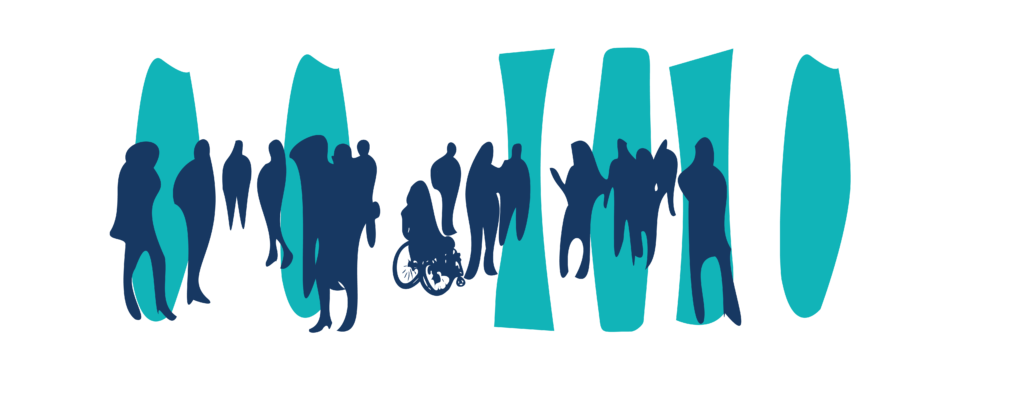
This letter is written by service users that were involved during the SWEET project. In this letter, they want to convince a fictive dean or head of the department of a social work education program to involve service users in social work education.
Dear lecturer,
We are a group of social service users and we heard that you are planning a new educational programme for future social workers. We therefor would like to share with you what we think is important for a good professional social worker.
First of all, we believe that participation is a method for social inclusion. To us, participation means that a service user is included in the whole process, from planning to evaluation.
Secondly, by letting service users participate, you give them a voice and you let them participate in society, which increases social inclusion.
Due to participation, service users and students gain different perspectives on a variety of social problems.
Another important aspect is that you can create sustainable partnerships with service users throughout the programme. This means that the service users participate on a regular basis, not only with the students but also with the teachers, researchers, and other staff.
By doing this, equity is improved between people in society. For us, this means everybody is on the same level and treated as an equal partner.
By using this participative pedagogy, all partners will gain more self-awareness and will feel empowered. By coproduction and participation, we mean that you let service users really take part in the education instead of just asking for their point of view once or twice.
And finally, by developing social work education together with service users this becomes a cocreative process. This benefits the whole society because it is part of the process of inclusion.
We expect you to respond to this and explain to our organisation how you will take this into consideration.
Kind regards
Jacques, Eva-Lena, Steven, Dorothy, & Evelyn
This exercise can be used if a lecturer wants to involve SU in Social Work education. The aim of this exercise is to formulate the goal of the project including service users. It is important that you, as a lecturer, don’t work alone and that you can share your thoughts and confront your ideas. This exercise can be performed with colleagues, students, SU, and partners.
Sit in duo (two students, student and service user, teachers): find a discussion partner and tell them about your goal of involving service users in social work education. The discussing partner is instructed to be clearer on refining and concretizing your goal with the involvement of SU, to make the goal realistic and achievable.
Before you start, encourage your partner to be curious. They have the task to let you describe vividly (describe why you want to do it) and in detail what the new situation will look like. In this way, you will increase your own enthusiasm for the idea! This will work like a magnet : it will inject dynamism into the whole process! For this reason, it is important to devote sufficient time to the exploration of the idea and the motivation of the proposal. It can work as a powerful stimulating force.
If you ask someone what they really want, what are their objectives, there is often a risk that their initial answer will be vague and general. Try to answer in more concrete terms : what will your objectives look like in reality if you achieve what you want to achieve ? Some simple questions like: What do you really want? What would make you happy? What is behind the first answer ? Continue and your partner will have to show their interest and ask in-depth questions.
What are the goal and objectives?
What would you like to see happen?
What do you want to achieve?
In which areas would you like to see some change?
What issues do you wish to tackle?
What is your dream?
Where do you hope to end up?
What would you like to be different?
Can you describe your goal in concrete terms?
What do you imagine that things will be like when service users are involved ?
How will you know when you have achieved your goal? What will be changed?
Leaving aside what others think, what do you really want for yourself? And for the students? And for your colleagues? And for the social work education?
What are your targets in the short term? In the long term?
What is the first step?
When would you be satisfied with the result?
The involvement of service users/experts by experience in Social work education is not a technicality or a provision, it’s a human and relational process that must be managed with awareness and care.
Every relational process is not without challenges and requires an ethical perspective to avoid tokenistic, paternalistic or stigmatizing effects, as shown by previous studies (Duffy, 2006; Anghel and Ramon, 2009; Driessens et al. 20161). Service users’ participation in social work education can bring ethical problems to the surface touching the essence of the interactions and relationships among students, educators and people with lived experience.
By developing the participation of service users in the educational programs, educators can confront different questions, asking themselves, for example:
At the base of these questions there are ethical issues, sometimes mixed with resources and organizational aspects that go beyond the educators’ possibilities. These ethical issues can create conflicts of values and moral tensions reproducing undesirable effects threatening the activities’ meanings.
First of all, staff has to accomplish the ethics procedures requested by each institution.
Beyond the ethics procedures, educators must hold a critical consciousness lens to identify sensitive topics and sensible related issues and be active in managing potential conflicts. Considering ethical issues is crucial to limit mechanisms and dynamics to reproduce power discourses dominated by rhetoric and injustice roots.
The involvement of service users in social work education must be coherent with the Global social work statement of ethical principles that represents a European source for reflecting and managing
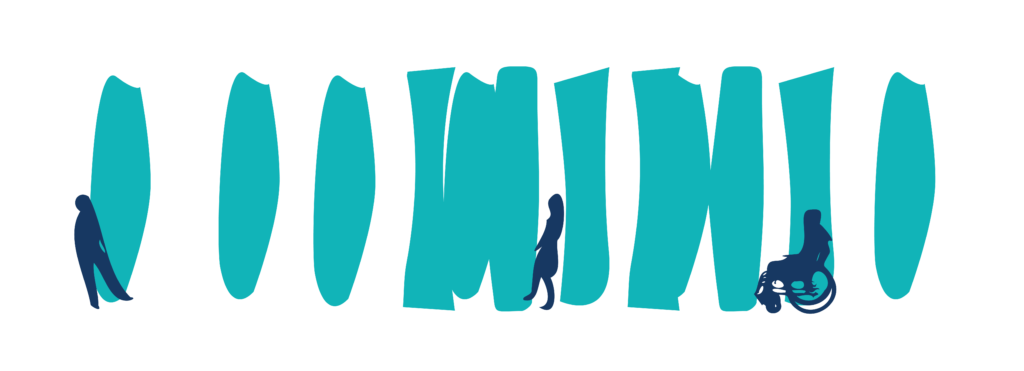
1. Can you give a description of what you mean by the term ‘service users’?
2. Briefly describe who you could involve as ‘service users’ within the Social Work Education program.
3. Do you involve service users in one or more program components in which you teach or supervise, in research, in-service activities within your university?
3.You have indicated that you involve service users in your activities within your university. Can you indicate during which activities you involve service users? Several answers are possible.
4.You indicated in the previous question that you involve service users during the lessons.
Can you describe your experiences below? (within which course, who are the service users, how do you deal with that, …?)
5. Do the service users receive a fee for their contribution? Please describe.
6.What are possible barriers for you to involve service users in the SOW program?
7.What are potential motivators for involving service users in the SOW program?
8.What would you like to achieve by involving more service users in the SOW program? Several answers are possible.
9. In addition to this survey, we would like to take a closer look with colleagues at the involvement of service users within our program.
May we contact you for an interview?
10. Do you have any comments or suggestions of your own? Then you can leave them here.
We thank you very much for your cooperation.
In order to provide a more in depth understanding of service users participation in social work education men can organize focus groups with your colleagues. Make sure you have someone to make good notes, or make an audio record of the meeting.
The duration of a focus group session takes about 1.5 hours. It gives participants the possibility of sharing experiences around service user’s participation. During the focus groups benefits, difficulties, and ways of improving/developing service users’ participation to the training of future social workers can be explored.
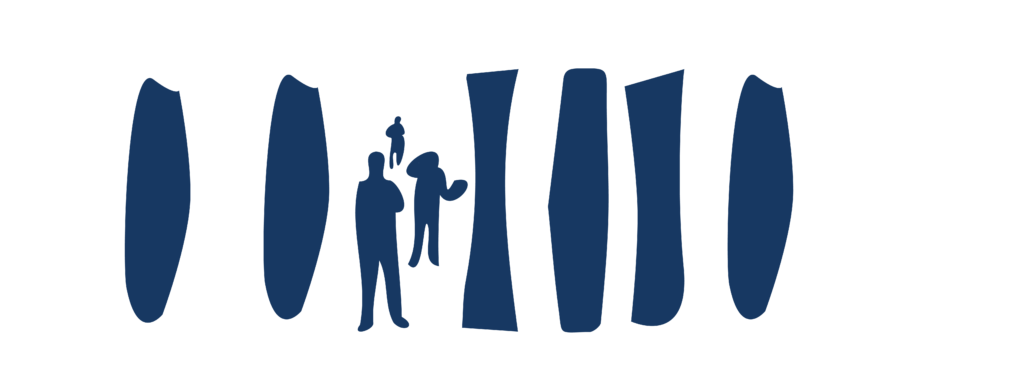
1. Can you give a description of what you mean by the term ‘service users’?
2. Briefly describe who you could involve as ‘service users’ within the Social Work Education program.
3. Do you involve service users in one or more program components in which you teach or supervise, in research, in-service activities within your university?
3.You have indicated that you involve service users in your activities within your university. Can you indicate during which activities you involve service users? Several answers are possible.
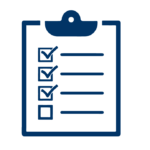
4.You indicated in the previous question that you involve service users during the lessons.
Can you describe your experiences below? (within which course, who are the service users, how do you deal with that, …?)
5. Do the service users receive a fee for their contribution? Please describe.
6.What are possible barriers for you to involve service users in the SOW program?
7.What are potential motivators for involving service users in the SOW program?
8.What would you like to achieve by involving more service users in the SOW program? Several answers are possible.
9. In addition to this survey, we would like to take a closer look with colleagues at the involvement of service users within our program.
May we contact you for an interview?
10. Do you have any comments or suggestions of your own? Then you can leave them here.
We thank you very much for your cooperation.
In order to provide a more in depth understanding of service users participation in social work education men can organize focus groups with your colleagues. Make sure you have someone to make good notes, or make an audio record of the meeting.
The duration of a focus group session takes about 1.5 hours. It gives participants the possibility of sharing experiences around service user’s participation. During the focus groups benefits, difficulties, and ways of improving/developing service users’ participation to the training of future social workers can be explored.
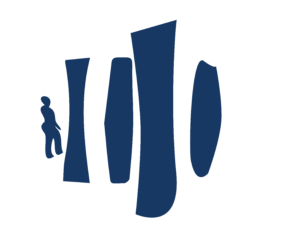
How to work with this model: One activity for SUP in a study programme usually is not enough to make the students sufficiently aware of SUP. This scheme can help you get a better overview of all the SUP practices within a social work education programme.
Position your SUP practice in one of the rings. The outer ring is the early phase of the programme, inner rings are closer towards graduation. Include all other SUP activities from the different phases of the programme. Reflect about all the SUP activities in the social work programme and consider if they occur at the right moment in the programme.
Add: (Module, Course name and Semester)
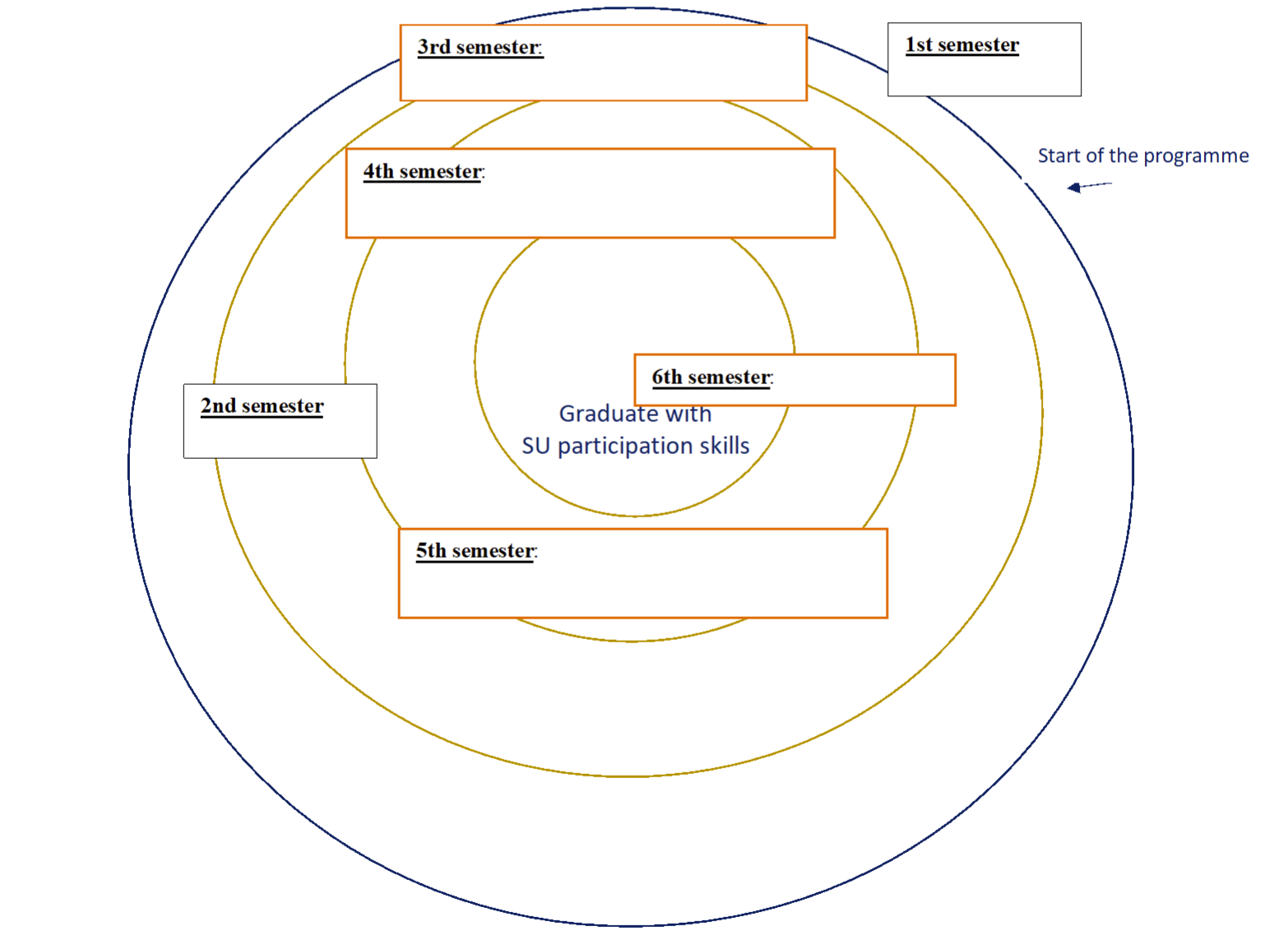
To involve service users in social work education it is important to select and prepare all involved participants, so they have the right mindset and skills (in accordance with prerequisites). It is also important to establish an agreement between service uses and lecturers/educational institution in advance concerning the basic requirements and the practical framework.


Whatever methodology you choose, it is important to have a few things in mind when you start! We can suggest some …

It is important for the lecturer to be present and available to everyone during the experience. After all, the meeting and the exchange may lead to situations that need our support. Remain attentive, ready and willing to help everyone during the exchange to ensure that the experience is useful, beautiful and enriching for everyone!
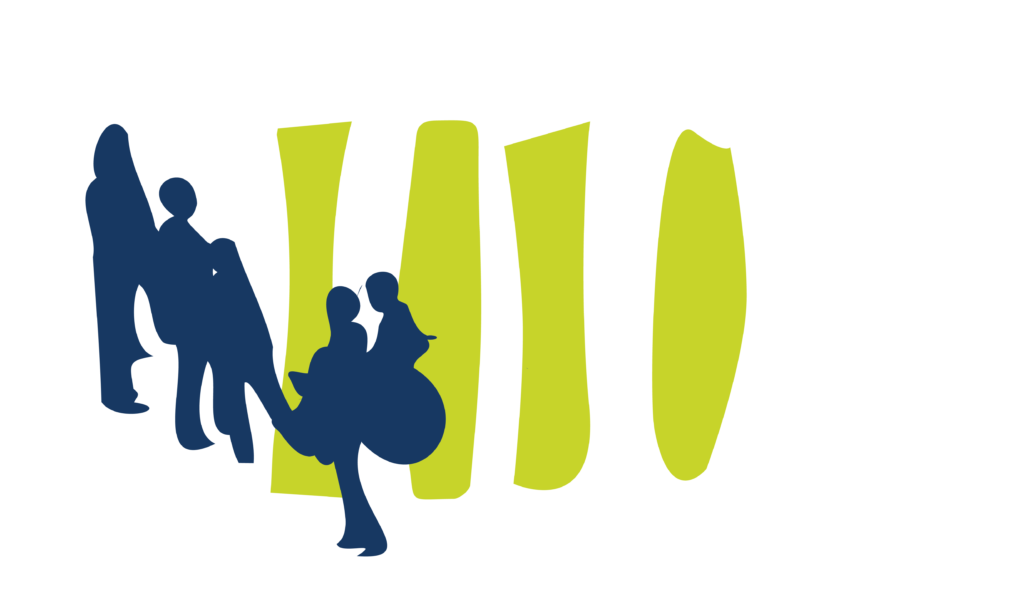
In social work education experiences, the encounter between students and service users can take place in many different ways (depending on the time available, the spaces available, the pedagogical aims, and the characteristics of the service users that may be involved). Below are some examples of methodologies, but feel free to come up with whatever suits your needs best!
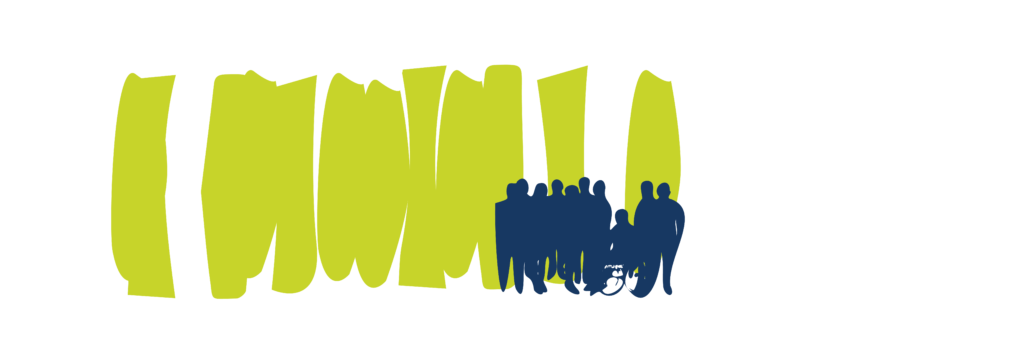
An important step is the reflection on the participative experiences, with the aim to develop Experiential learning processes involving students but also lecturers, and service uses (experts by experience). It’s not only a matter of exposure: students join participative activities with experts by experiences but it’s important to create opportunities and conditions to encourage students’ learning from lived experiences.
1. For student´s learning process – to raise awareness about the learning activity, feelings expectations, prejudice – to broaden their professionalism
2. For pedagogical reasons
The element to learn from the experiences is Reflexivity (Schön, 19831).
The Experiential Learning Theory elaborated by David Kolb (19842) defines experiential learning as a four-stage process described in Figure number 1.

1. Concrete learning occurs when a student has a new experience or interprets a previous experience in a new way. For example, a student engaged in an educational activity with experts by experiences.
2. Reflective observation – it’s reflection in and on the work being carried out. The student reflects on the lived experience to understand what it means and if this experience has produced thoughts and insights relevant for his/her educational path
3. Abstract conceptualisation – the student, through the support of educators and practice teachers, adapts their thinking or constructs new ideas based on experience and reflection.
4. Active experimentation – the student applies their new ideas to real-world situations to test whether they work and see if any changes need to be made (about the educational path and the future practice).
Reflective learning processes can be individual, peer to peer or collective and can be stimulated in oral or written form.
Below you will find tools and stimulus that can guide you to accompany the reflection on the experience.
A) Key questions to collect opinions and feelings on the experience
For example:
After the meeting/interview…with the service users expert by experience…
What do you think?
How do you feel?
Do you discover something new?
B) Keywords to collect opinions and feelings before/during/after the experience
For example:
With which words/adjectives do you describe the experience?
My word before the experience was…(curiosity, fear, enthusiasm…)
My keyword during the experience was…
My keyword during the experience was…
To realize this, you can use also a wordcloud generator.
C) Say it with an image!
Students are invited to search or to produce a picture representing what she has learned through the experience. In group, students are invited to describe the selected picture stimulated by 2 questions: What it describes for you? Why you choose this image? After the presentation, each student put the image at the centre of the group and later are involved in a joint discussion aimed at identifying commonalities and differences among students’ reflections.
D) Write a letter to a friend
Students are invited to take time to write a letter to a friend describing the activity in which they were involved.
You can give students a range of words and you can guide reflections on the representations and the words used by the students to share what they have experienced.
E) Students and Experts by experience write to each other
Students and Experts by experience are invited to produce a short message text or a short letter to each other. Through the texts you can collect information about the effects on the experience both on students and experts by experience. These texts represent materials on which you can start the reflection (individually or in group) and can also represent a gesture of thankfulness.
F) Vignettes and scale
You can collect information and stimulate the reflection also through vignettes measuring different matters, like students’ satisfaction, attitudes or emotional impact about the activity. In literature you can find some example, like AIMQ (Luty et al. 20063). A Likert scale is commonly used to measure attitudes, knowledge, perceptions, values, and behavioral changes. A Likert-type scale involves a series of statements that respondents may choose from in order to rate their responses to evaluative questions (Vogt, 19994).
Giving a statement you can value the Level of importance, the Level of agreement or the Frequency.
Example
Statement: The encounter with the service user in the classroom has been:
1 – Not at all important
2 – Low importance
3 – Neutral
4 – Very important
5 – Extremely important
Students are invited to read the statement and select the number/the item
Example
Statement: Speaking with the service user has changed my view on ‘people in trouble’
1 – Strongly disagree
2 – Disagree
3 – Neither agree or disagree
4 – Agree
5 – Strongly agree
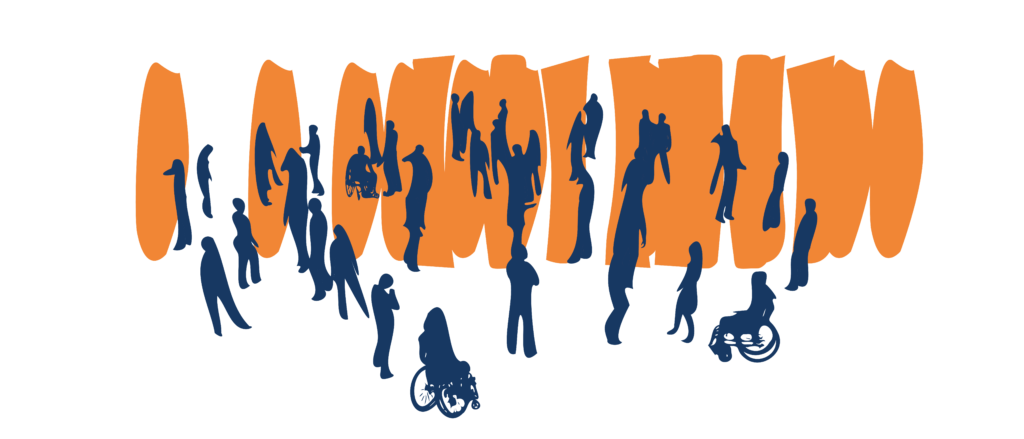

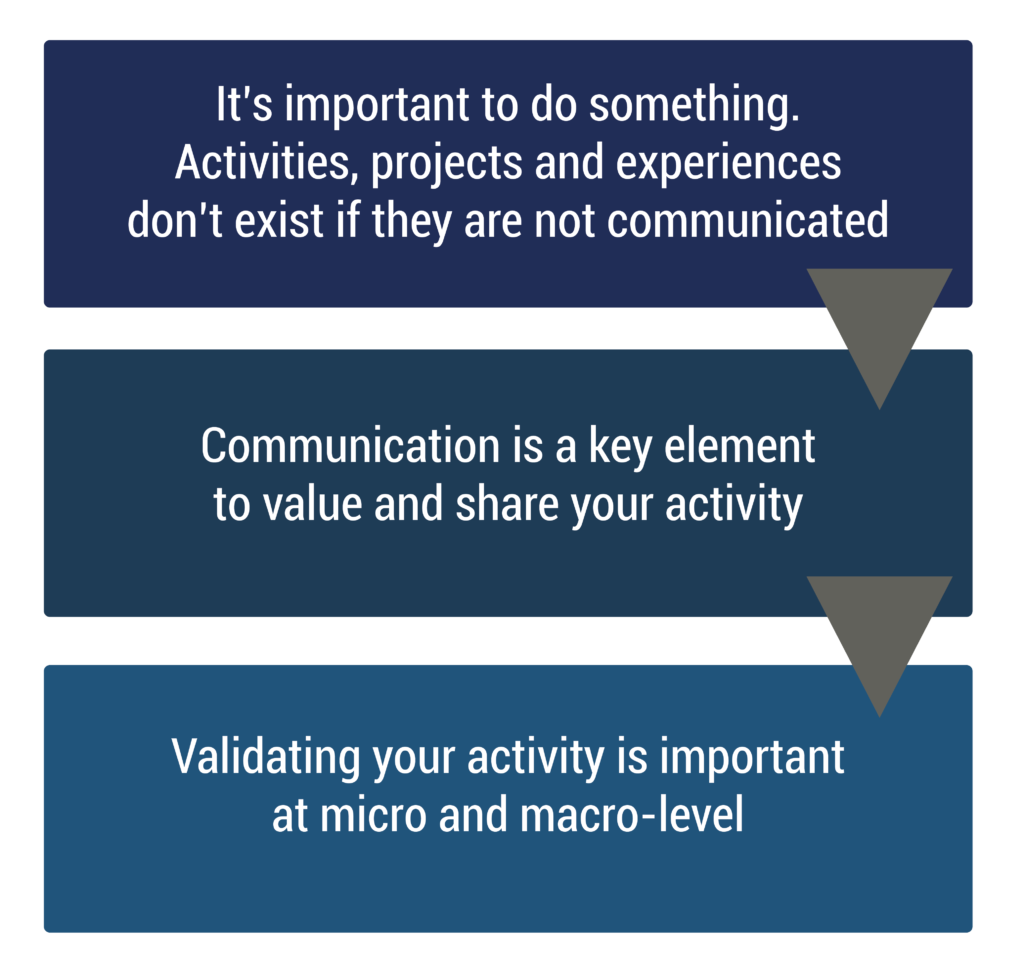
Sharing can produce an impact on:
– you and other educators;
– experts by experience;
– social workers;
– middle managers, managers and policymakers;
– the institution’s relationships and reputation;
– the local community;
– the discipline development.
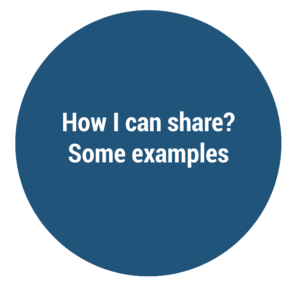
You can plan and organize initiatives looking for collaborations and involving students, educators, experts by experience, practitioners, the national association of social workers…
Developing a means and language to express your professional identity is an essential skill for any social worker today. This professional identity takes shape in interaction between the individual and his professional environment and is inevitably a story of talents and competencies and how these fit into the institutional and professional framework of the social work profession. The social work practice is broad professional field, which is why it is crucial the starting professional is able to present himself and his unique profile to future employers and colleagues.
The Model of Professional Identity, originally developed by Manon C.P. Ruijters, serves as a useful framework to think and talk about professional development and identity for students and professionals alike.

The frame of the personal self examines the personal aspirations, motivations, values and vision of the student/professional in relation to the social work profession. More specifically it focusses on the social self (why and how do I interact with others?), the spiritual self (what are my convictions and beliefs and how do these influence my life choices?) and the material self (what do I feel responsible for?).
The frame of the professional self deals with the development of one’s personal professional skills and interests. It encourages critical reflection on practice-theory (which scientific frameworks and evidence-based practices are the foundation of my professional behavior?), experience (what field am I specialized in or would I like to specialize in?) and the knowledge base (what knowledge have I
acquired on specific topics relevant to my profession and what would I need or like to learn more about?).
The professional environment frame encourages students/professionals to actively reflect on their relationship with their direct professional environment. What is the connection between personal values and convictions and the values of the organization I work for? What role suits my professional profile in relation to the culture, vision and mission of the organization in terms of co-creation, cooperation and autonomy? Does the organization enable me to exceed daily routines and realize my full potential as a social worker?
Finally, the institutional frame invites the student/professional to critically analyze and engage with the institutional context in which social work organizations operate. What are the political and legislative norms and regulations which determine how professional activities are organized? How does the public look at the social work profession? How can we engage society to support and amplify the objectives of social work within the specific institutional context?
It is through critical reflection one these four frames, and more importantly the way these frames interact with each other and influence one another that students/professionals can develop a clear personal vision on their personal learning process and make deliberate career choices which benefit the individual, the organization and society. This personal vision and insight are an important prerequisite for lifelong learning, which is a crucial element of career management in the context of the rising challenges for our profession in a globalized and ever-shifting world.
A commitment to lifelong learning implies the ability to continually update one’s professional skills. Social Workers are expected to be proactive in identifying and meeting their individual professional learning needs. Learning activities will arise from education and everyday work experience, as well as any other requirements imposed by external circumstances or organizational needs. Professional Development is the means by which members of the profession maintain, improve and broaden their knowledge, expertise and competence. It requires an increasing ability to differentiate a personal from a professional self through increasing self-knowledge and awareness of one’s own limitations, and ability to deal with one’s own subjectivity as it affects relationships with clients. An active awareness of one’s own strengths, talents, frames of reference and personal value system is essential for autonomous professional functioning and enables a social worker to identify their own unique learning needs and to develop a plan for establishing and maintaining continuing competence in his or her current and future context of practice.
Professional development is a process which should be ongoing and involves the critical reviewing of practice to identify learning requirements. It should be structured, planned and relevant to a social worker’s level of experience and expertise. It serves as the crossroads where practice theory, field experience and personal growth meet to integrate into a unique and continually developing professional identity. It also implies an awareness of and well-founded vision on the challenges social work faces in today’s world.
When working with the Model of Professional Identity, the student is the architect of a self-driven learning process. The student is stimulated to assess his own learning needs and goals, plan his own actions and evaluate whether these goals are met. To attain this, the student will interact with fellow students and actively consult with (a) lecturer(s) about the different aspects of their personal and professional development.
The four frames within the model allow students to first reflect on those different frames and then step-by step learn to reflect on the interconnectivity between these different aspects of professional identity: the relation between one’s personal self, one’s professional aspirations and the broader organizational and institutional conditions which determine the context of the social work practice. This is by no means an easy task for students, since they are generally unaware of these connections and influences and lack the experience to value the importance of these different interdependent aspects of their professional development. Nonetheless, this model enables the students to make abstraction of these elements, study them one by one and slowly acquire the means and insights to analyze and express the connections between them. This, in turn, will stimulate them to reflect on their sprouting professional identity. This ability will not only enable them to seize relevant personal learning opportunities throughout their education but will also prepare them to present themselves to potential future employers in a more personal and substantiated way.
The Model of Professional identity also stimulates students to integrate the knowledge and skills they acquire through different course units in their education, since these are all considered relevant for their professional development. As such, it reinforces the learning effects of these courses and stimulates them to discover the connections between the different fields of social sciences and the social work field. Possible learning outcomes which can be stimulated by working with the concept of professional identity are:

SOCIAL WORK EDUCATION
EXPERTS BY EXPERIENCE

